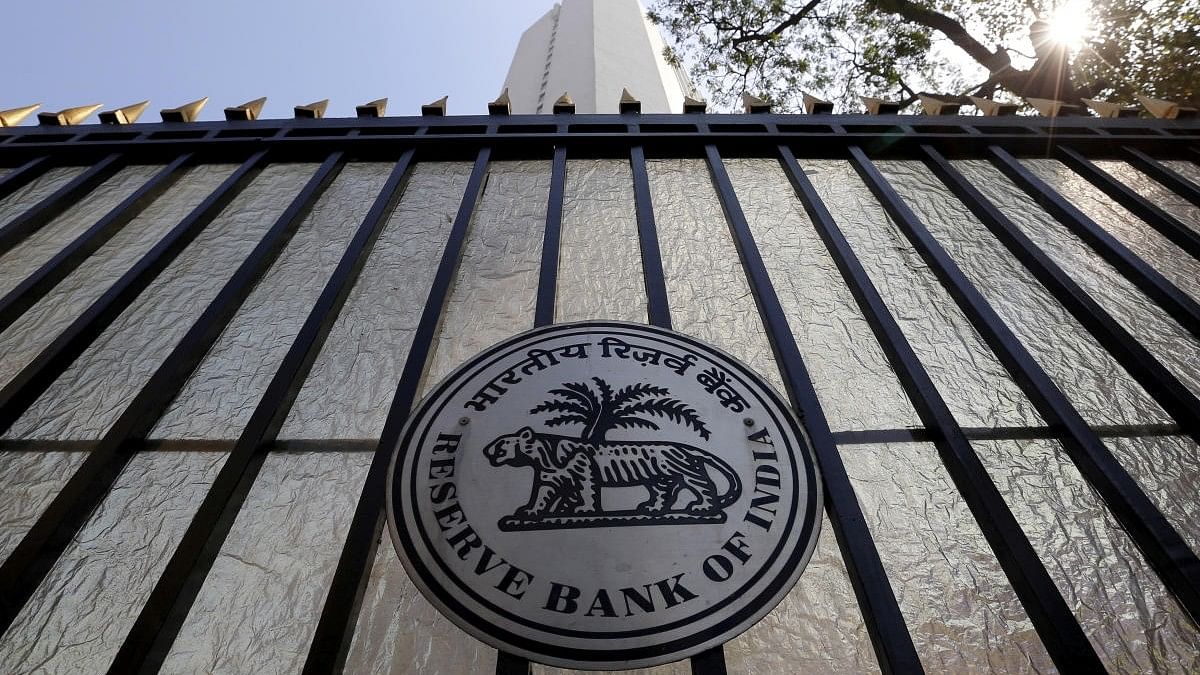
Reserve Bank of India (RBI) seal.
Credit: Reuters Photo
The Reserve Bank of India (RBI) is expected to keep interest rates unchanged in its December monetary policy review with the key influencing factors turning benign amid increasing prospects of the United States Fed tethering further rate hikes. However, the hawkish tone is likely to be maintained since the upside risks to inflation remain tentative and conspicuous. Hopefully, another pause, or two, might eventually pave the way to the first rate cut of around 50 bps in mid-2024.
Can inflation sustain the downward trajectory?
While experts believe that the central bank may now hold further hikes till the US Fed cuts the rates in due time, the expectation is not without its own set of quandaries. Despite the benefit of a favourable base effect, the inflation numbers in October at 4.87 per cent (vs 5.02 per cent in September) have given the RBI some latitude, but vexing data points to consider for the last quarter of FY2024. Though the consumer price index-based inflation eased to a four-month low of 4.87 per cent in October, it is still above the RBI's target — for many months in a row now — and may spike in December.
Vegetables have corrected significantly while cereals and milk products have moderated in October. But pulses and its products continue to remain elevated on the broader shortage, forcing the central bank to warn of recurring food price hikes. The government had to step in with an export ban on several items. Such brittleness in food prices has forced the overall inflation expectation for the fiscal to remain at 5.4 per cent. The unseasonal rains and the unusual dryness have played havoc with India’s major harvesting and sowing seasons. If the El Nino turns more detrimental than expected, it could again upset the calculations.
Consumption demand lends a big support
Not everything is gloomy. The urban demand is robust as seen by high GST collections, an impressive sales growth of 19 per cent in the festive period, and a peppy consumer confidence. Rural demand, which remains vulnerable to uncertain farm incomes, seems to be slowly picking up. The government has accelerated capital expenditure in the first six months of FY2024. This may sustain during the second half (H2) as India prepares for the general elections most likely in May 2024. That would provide strength to the economy, goading the RBI to look at a potential cut in the early part of FY2025.
Sept-quarter GDP growth gives a strong fillip
As expected, the September quarter has seen a high GDP growth of 7.6 per cent thanks to the rising capital expenditure, a steady services sector, and buoyant consumption-oriented sectors. Several sectors such as real estate, core goods, and construction have performed well. As of now, the government has spent Rs 1.16 trillion in capital expenditure — nearly 50 per cent of the overall yearly Budget target. Amid such economic liveliness, the central bank may certainly prefer to wait for the full transmission of the rate hikes so far into the broader economy.
Will the US Fed oblige?
Thankfully, the US Fed seems to be in a mood to hold off further hikes in the December meeting despite the strong US GDP growth of 4.9 per cent in the last quarter. A marginally lower CPI reading in October seems to be a good hint that inflation is moving in the right direction, enabling the Fed to signal the peak rate cycle.
Though the Fed chair has spoken of a ‘whatever it takes’ scenario, traders are discussing expectations of the first rate cut sooner rather than later. The correction in both the US bond yields and global crude oil prices in the last few days also hints at this view gaining ground. For the RBI, this means less pressure on the Indian Rupee due to lower capital outflows. The balance of payments scenario already remains stable and if crude stays at a more reasonable $75-77 level, it would also point to lower imported elements in the overall inflation calculation.
Globally, a collective consensus seems to be emerging to pause rate hikes for the time being besides the realisation that meeting respective inflation targets by any means is no mean task. The Bank of England, which kept the rates on hold for the second consecutive month in November, says bringing inflation to the 2 per cent target will be ‘hard work’ besides that it is restricting and even damaging the economy. Central banks are now actively analysing the impact of higher interest rates on households due to higher mortgages.
RBI Governor Shaktikanta Das has made it categorically clear that the monetary policy so far has been “actively disinflationary” to align the inflation to the 4 per cent target. But for an economy that stood firm with him so far — despite the global uncertainties and internal tribulations — an assuring stance is required to sustain the tempo.
(Manish Kothari is President and Head – Commercial Banking, Kotak Mahindra Bank Ltd.)
Disclaimer: The views expressed above are the author's own. They do not necessarily reflect the views of DH.